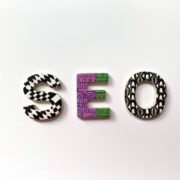Mastering Landing Page Design: Key Elements and Best Practices for Success
In the digital world, landing pages are the gateway to conversions, making them a critical component of any online marketing strategy. A well-designed landing page can capture leads, drive sales, and boost conversion rates. However, creating an effective landing page requires careful planning, strategic design, and a deep understanding of user behaviour.
This comprehensive guide will delve into the key elements and best practices for mastering landing page design to maximize your online success.
Understanding Landing Pages:
Before diving into the intricacies of landing page design, it’s essential to understand what exactly a landing page is and its significance in the digital marketing landscape. Simply, a landing page is a standalone web page designed with a specific purpose, such as capturing leads or promoting a product or service. Unlike traditional website pages, landing pages are streamlined and focused, with a singular call-to-action (CTA) to guide users towards conversion.
Critical Elements of Effective Landing Page Design:
1. Clear and Compelling Headline:
– Your headline should instantly grab the visitor’s attention and clearly convey the value proposition or offer.
– Keep it concise, impactful, and relevant to the user’s needs or interests.
2. Engaging Visuals:
– Incorporate high-quality images, videos, or graphics that resonate with your target audience.
– Visuals should support the overall message and help reinforce the benefits of your offer.
3. Persuasive Copywriting:
– Craft compelling copy that highlights the unique selling points of your offer.
– Focus on addressing the user’s pain points, benefits, and outcomes rather than just features.
– Use persuasive language and action-oriented phrases to encourage users to take the desired action.
4. Clear Call-to-Action (CTA):
– Your CTA button should stand out prominently on the page and clearly communicate the action you want users to take.
– Use contrasting colors, persuasive copy, and ample white space to draw attention to the CTA.
5. Social Proof and Trust Signals:
– Incorporate testimonials, reviews, case studies, or trust badges to build credibility and trust with visitors.
– Highlight any social proof or endorsements to reassure users of the value and reliability of your offer.
6. Mobile Responsiveness:
– Ensure your landing page is optimized for mobile devices to provide a seamless user experience across all devices.
– Use responsive design principles to adapt the layout and content for smaller screens without sacrificing usability.
7. A/B Testing and Optimization:
– To optimise performance, test different elements of your landing page, such as headlines, visuals, CTAs, and form fields.
– Use A/B testing tools to analyze data and make data-driven decisions to improve conversion rates over time.
Best Practices for Landing Page Design:
- Keep your landing page design consistent with your brand identity, including colors, fonts, and imagery.
- Consistency instills trust and reinforces brand recognition, helping to create a cohesive user experience.
- Avoid overwhelming visitors with excessive information or distractions.
- Keep the layout clean, organized, and focused on the primary goal of the page.
- Optimize your landing page for fast loading times to minimize bounce rates and improve user experience. UK CRO agency can help you create a effective landing page design.
- Compress images, minimize HTTP requests, and leverage caching techniques to speed up page load times.
- Use visual hierarchy to guide users’ attention towards key elements, such as the headline, CTA, and form.
- Utilize size, color, contrast, and positioning to create a clear visual flow and emphasize important content.
- Ensure your landing page is fully responsive and adapts seamlessly to different screen sizes and devices.
- Test your landing page across various devices and resolutions to ensure optimal performance.
Conclusion:
Effective landing page design is a cornerstone of successful digital marketing campaigns, providing a focused and persuasive platform to drive conversions and achieve business objectives. You can create landing pages that resonate with your audience and inspire action by incorporating key elements such as clear headlines, engaging visuals, persuasive copywriting, and compelling CTAs. Additionally, following best practices such as maintaining visual consistency, prioritizing page load speed, and implementing responsive design ensures a seamless user experience across all devices. By mastering the art of landing page design with the conversion agency and continually optimizing your approach, you can unlock the full potential of your online marketing efforts and drive meaningful results for your business.




